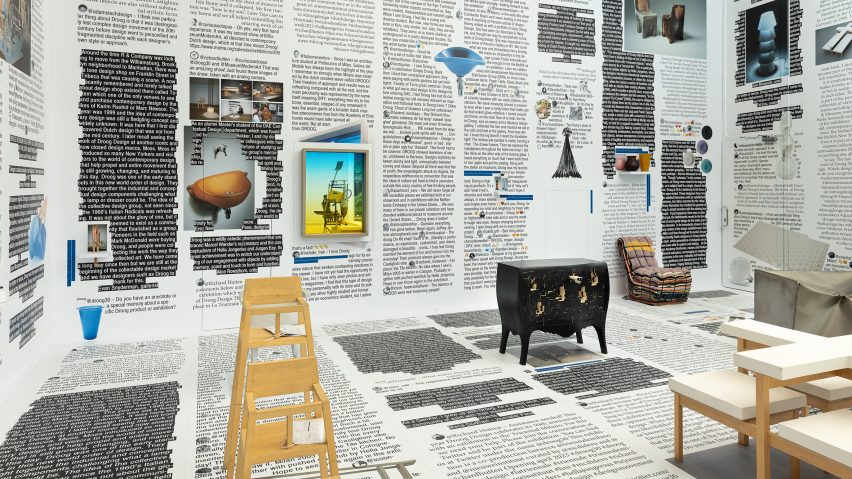
"Droog is the last movement in design" says designer Richard Hutten
On the 30th anniversary of Droog's first show in Milan, founding member Richard Hutten has curated an exhibition celebrating the Dutch design movement and its lasting influence.
Titled Droog30 – Design or Non-design, the exhibition was originally launched at this year's Milan design week and is now opening at Rotterdam's Nieuwe Instituut today.
Rather than a retrospective, the exhibition was designed as a homage to Droog – presenting some of the collective's key designs while exploring the gaps between Droog and the contemporary world.
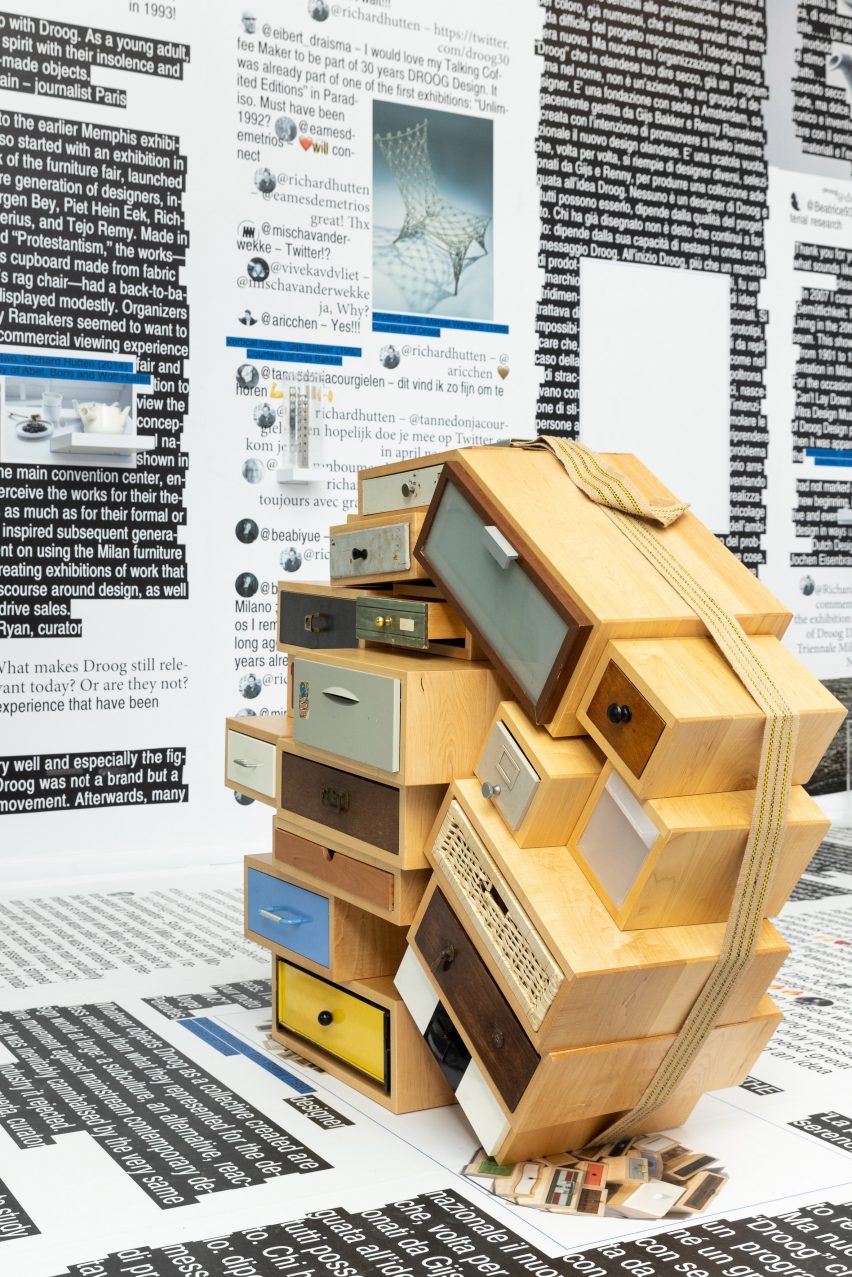
When Droog made its international debut at Milan design week in 1993 with works like Tejo Remy's assemblage of salvaged drawers and Hutten's cerebral Table Chair, it was in a world with no internet, no mobile phones and limited ways of communicating internationally.
This allowed a way of working that Hutten says is now foreign to think about.
"If I design something today, I put it on Instagram tomorrow and the day after it goes viral and the day after that it already gets copied and then you can never make a movement," he told Dezeen.
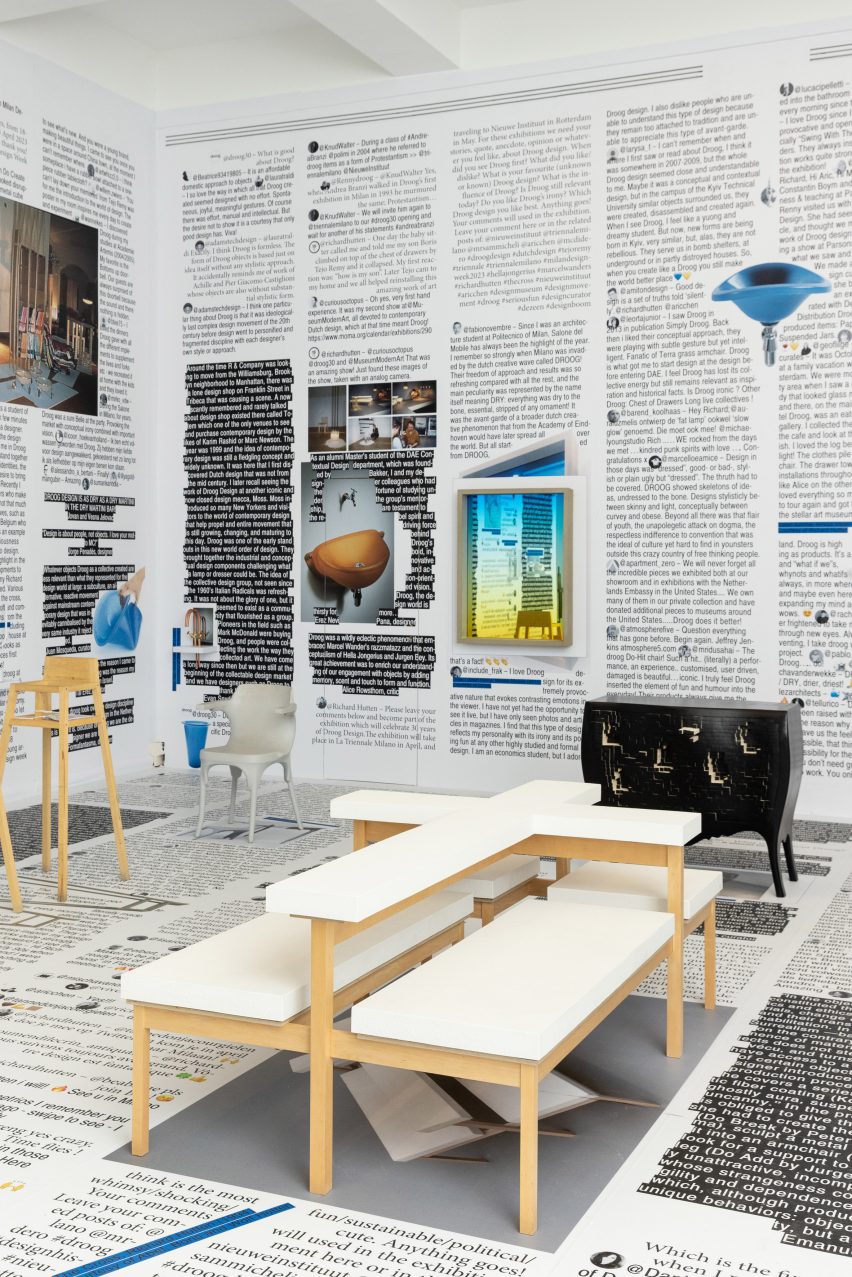
"But the fact that there was no internet and we worked relatively in isolation [meant] we could make this big bang in '93 in Milan," he continued.
Back then, the most high-tech tool Hutten had in his studio was a fax machine. And while he knew what his contemporaries in the Netherlands were doing, those in other countries did not.
"The world was a totally different place," he said. "And that's why I think Droog is the last movement in design. In the '80s, we had Memphis. In the '90s, we had Droog. And since then, there has not been any big movement in design, or in art or in architecture."
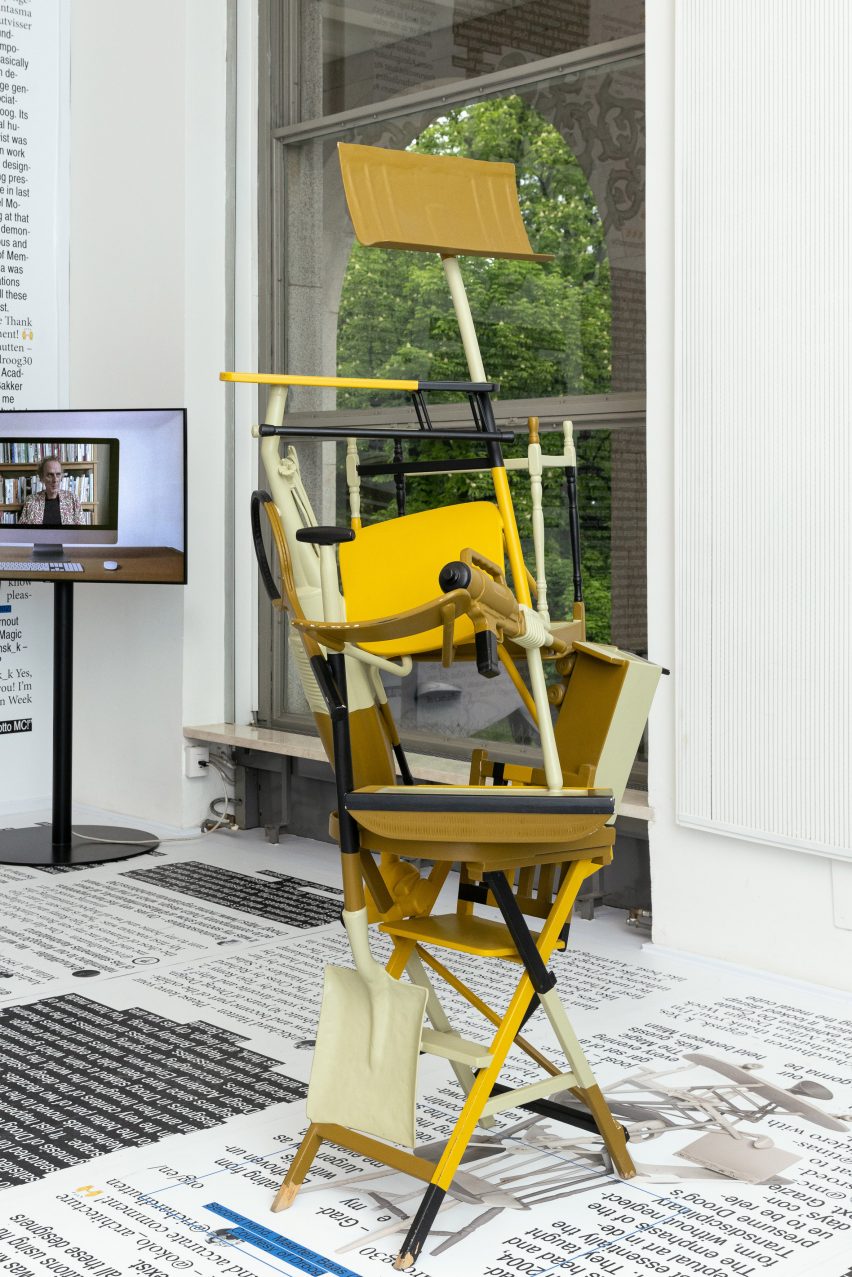
A loose collective of members, Droog was started only a few months before the Milan show in 1993 by Dutch designer Gijs Bakker and curator Renny Ramakers.
Hutten was in the early days of his design career and got the landline call to participate from Bakker – his former teacher at the Design Academy Eindhoven (DAE), from which he had graduated two years earlier.
The aim was to present a snapshot of what was exciting them about design in the Netherlands, where they were building on each other's ideas to reappropriate found objects, subvert ideas of form and function, and explore concepts over products.
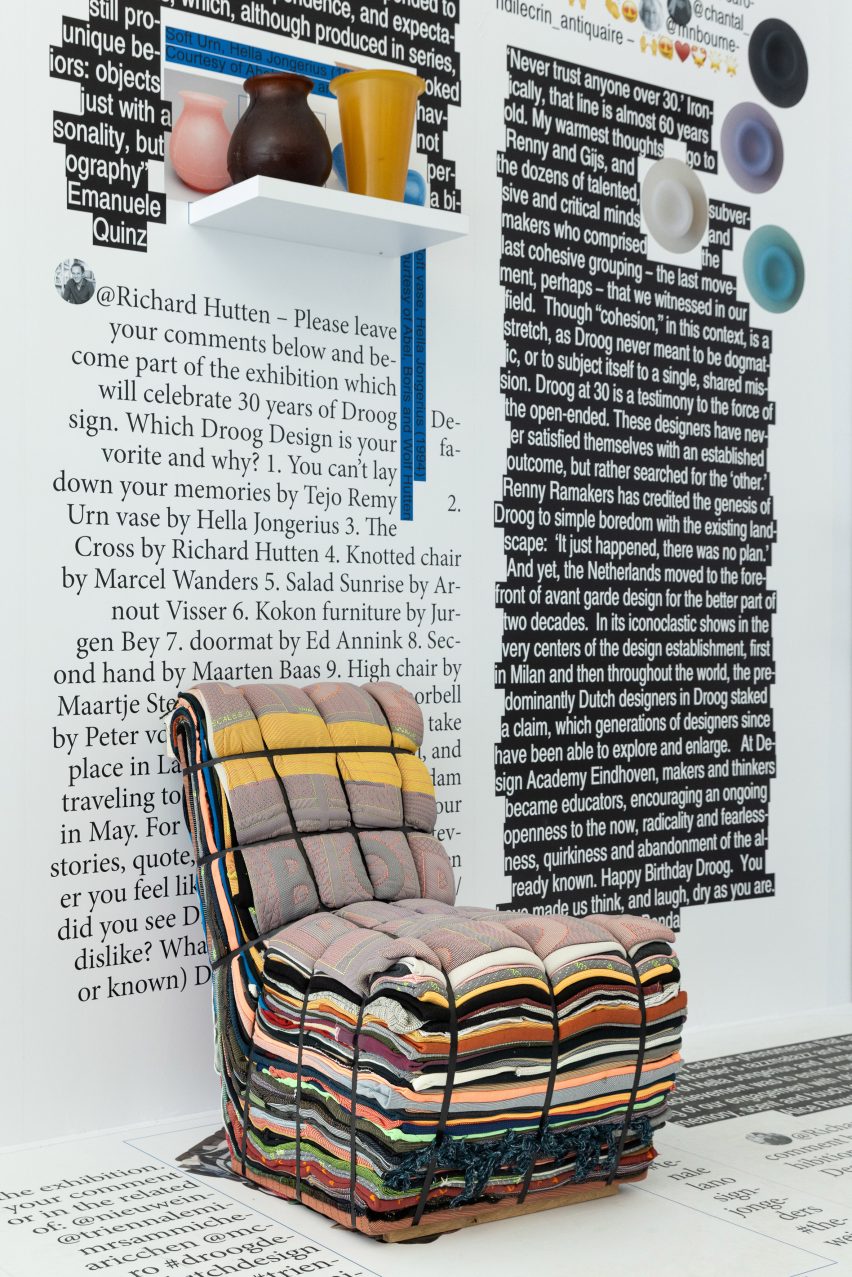
Their intervention changed design, Hutten says.
"The big achievement of Droog was that we were adding topics to design, which were not there at that time," he explained. "Design was basically about form, style, luxury."
"All of a sudden, we added topics like sustainability, imperfection, archetypes," Hutten continued. "We widened what design was."
Droog, meaning "dry" in Dutch, went on to feature the work of renowned designers including Hella Jongerius, Marcel Wanders, Maarten Baas, Joris Laarman and Jurgen Bey before dispersing around a decade ago.
Today, the Droog name continues as a design brand only. But Hutten sees its influence everywhere, including at the DAE's recent graduation shows, where "literally everything was conceptual".
"There were hardly any products," he said. "It was all about installations and concepts and ideas. That would have never looked like it looked now without Droog."
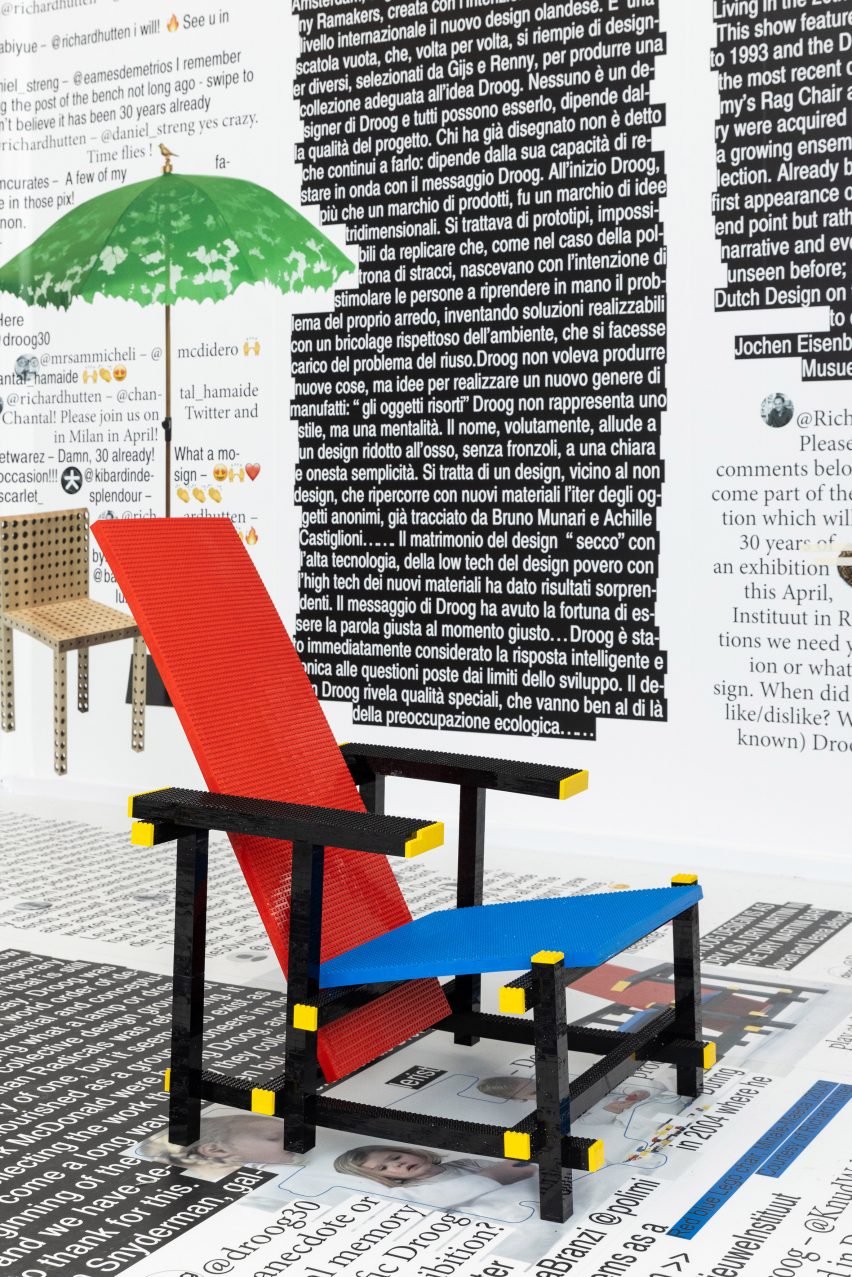
In the Droog30 exhibition, which Hutten co-curated together with Maria Cristina Didero, the movement's history is presented within an installation of what Hutten calls "analogue social media".
This consists of printed-out sheets of comments, crowdsourced from Twitter, Instagram and Facebook, that line the floors and walls – combining a tool that didn't exist in Droog's day with a style and humour that is true to the group.
Hutten obtained the comments by asking questions of his social media followers, trying to elicit their opinions, reflections and memories of Droog.
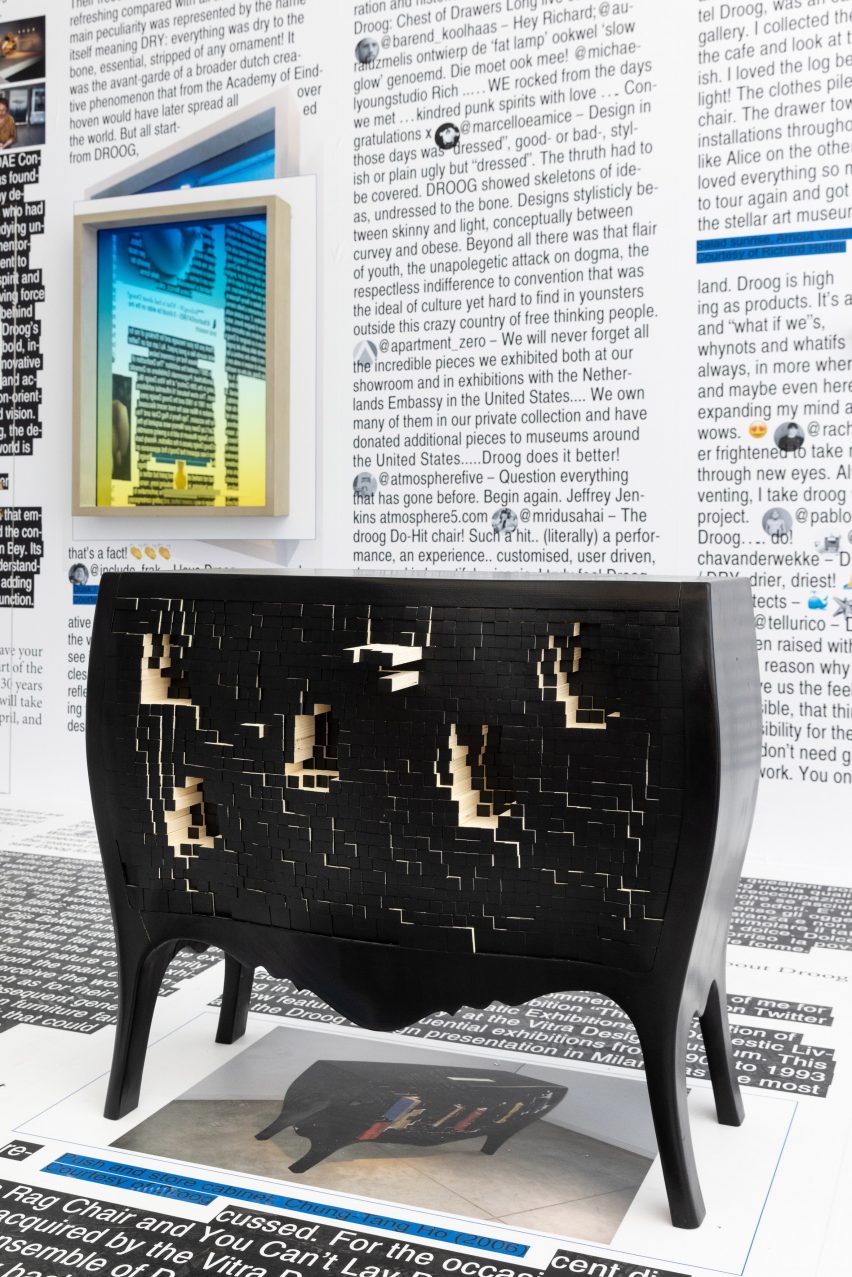
The responses include thoughts from curator Paola Antonelli, design critic Alice Rawsthorn and Droog icons like Wanders alongside design studio Formafantasma, whose own later work for Droog also features in the show.
"Formafantasma said: that's the reason why we went to Eindhoven to study design, because of Droog," Hutten explained.
The exhibition also features a second analogue twist on modern technology. The works on display were chosen by an algorithm, but one that was applied manually by the curators rather than electronically by computers.
It is an algorithm in the original sense – a set of rules to be followed in a calculation.
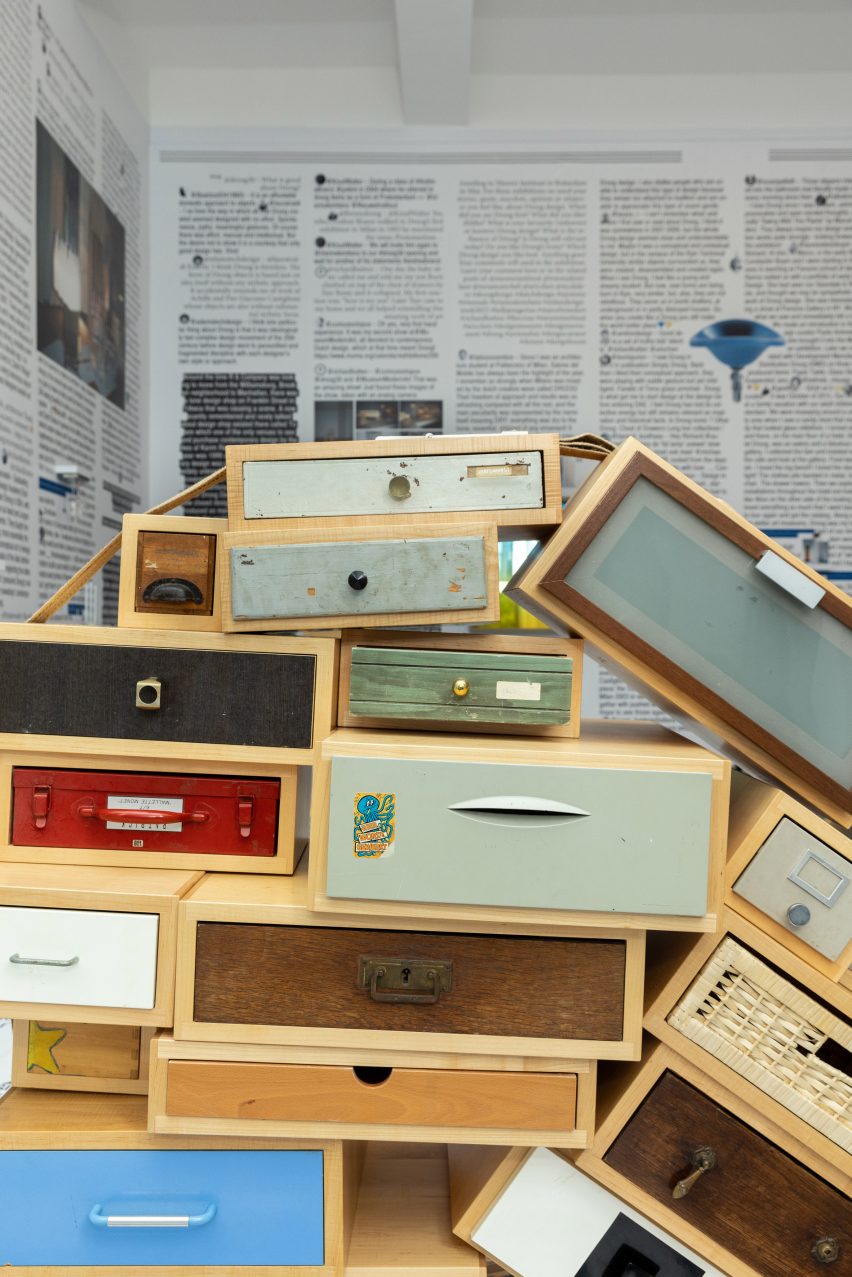
Hutten won't share the rules they used – "like Twitter, Instagram and Facebook, our algorithm is secret" – but says it resulted in a surprising mix that shows the diversity of Droog rather than just the evergreen designs.
Their curatorial approach is meant to be a celebration of making in a digital world, Hutten said.
"Nowadays in design, you can make an NFT or render or you don't even have to make things anymore," said Hutten. "And Droog is definitely about the fun of making and the physical world."
The photography is by Gianluca Di Ioia.
Droog30 – Design or Non-design? is open from 2 May to 27 August 2023 at the Nieuwe Instituut in Rotterdam. For more events, exhibitions and talks in architecture and design visit Dezeen Events Guide.